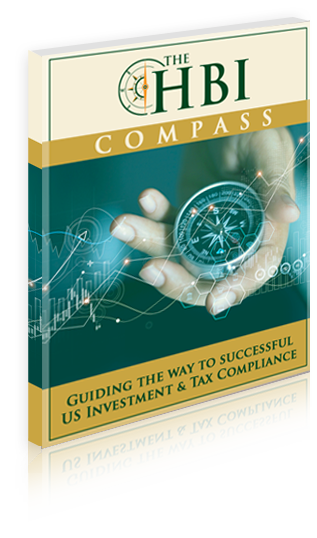Saving for retirement is not just about securing your future; it also offers immediate tax benefits that can enhance your financial well-being today. We specialize in providing personalized and comprehensive tax solutions that help you make the most of your retirement contributions. In this blog, we will explain the tax benefits of various retirement savings plans and provide strategies for maximizing these benefits to enhance current and future financial security.
Traditional IRA
A Traditional Individual Retirement Account (IRA) is one of the most popular retirement savings vehicles, offering immediate tax advantages.
Contributions to a Traditional IRA are often tax-deductible, which means they can lower your taxable income for the year the contributions are made. This provides an immediate tax benefit, as you’ll pay less in taxes today. The earnings within the account grow tax-deferred, meaning you will only pay taxes on the investment gains once you start making withdrawals in retirement. To maximize benefits, consider contributing the maximum allowable amount each year — $7,000 for individuals under 50 and $8,000 for those 50 and older (as of 2024).
Roth IRA
While Roth IRAs do not offer immediate tax deductions, they provide significant tax benefits in the future.
Contributions to a Roth IRA are made with after-tax dollars and do not reduce your current taxable income. However, the real advantage comes during retirement when withdrawals are entirely tax-free, provided certain conditions are met. This feature makes Roth IRAs an excellent option for individuals anticipating a higher tax bracket in retirement. To optimize benefits, contribute the maximum amount allowed and take advantage of “backdoor” Roth IRA strategies if your income exceeds the contribution limits.
401(k) Plans
Employer-sponsored 401(k) plans are a powerful tool for accumulating retirement savings and reducing current tax liabilities.
Contributions to a traditional 401(k) plan are made with pre-tax dollars, directly reducing your taxable income. For 2024, the contribution limit is $23,000, with an additional catch-up contribution of $7,500 for those aged 50 and older. Many employers also offer matching contributions, giving you free money to bolster your retirement savings. To maximize benefits, always contribute enough to receive the full employer match and consider making additional contributions up to the annual limit.
Roth 401(k)
Like a Roth IRA, a Roth 401(k) provides tax-free withdrawals in retirement, making it an attractive option for long-term tax planning.
Contributions to a Roth 401(k) are made with after-tax dollars, so they do not reduce your current taxable income. However, the contributions, along with the investment growth, can be withdrawn tax-free in retirement. This enables significant tax savings down the road. Given the high contribution limits of a 401(k) plan, maximizing your Roth 401(k) contributions can provide a substantial tax-free retirement income.
SEP IRA and SIMPLE IRA
For self-employed individuals and small business owners, SEP and SIMPLE IRAs offer tax-efficient ways to save for retirement.
A SEP IRA allows for significant pre-tax contributions — up to 25 percent of your net earnings from self-employment or $69,000 for 2024, whichever is less. Contributions are tax-deductible, and the investment grows tax-deferred.
SIMPLE IRAs allow employer and employee contributions, with employee contributions up to $16,000 and the employer matching up to 3 percent of the employee’s salary. Catch-up contributions are also permitted for those aged 50 or older. These plans provide immediate tax benefits and can benefit the business owner and employees.
Health Savings Accounts (HSAs)
While primarily designed for healthcare expenses, Health Savings Accounts (HSAs) offer ancillary retirement savings opportunities with unique tax advantages.
Contributions to an HSA are tax-deductible, the investment grows tax-deferred, and withdrawals for qualified medical expenses are tax-free. After age 65, HSA funds can be withdrawn for any purpose without penalties, although withdrawals for non-medical purposes will be taxed as income, similar to a Traditional IRA. Maximize benefits by contributing the annual limit — $4,150 for individuals and $8,300 for families in 2024, with an additional catch-up contribution for those aged 55 and older.
Maximizing Contributions
The key to optimizing the tax benefits of retirement contributions is to contribute the maximum allowable amounts to your accounts and strategically allocate contributions based on your current and anticipated future tax situations.
To maximize tax benefits of retirement contributions, consider a diversified approach—allocating funds to pre-tax and post-tax accounts like Traditional and Roth IRAs or 401(k)s. This provides tax savings today while planning for tax-free income in retirement. Additionally, take advantage of catch-up retirement contributions if you are 50 or older and explore combining employer-sponsored plans with personal IRAs to maximize annual retirement contributions.
Understanding and maximizing the tax benefits of retirement contributions can significantly impact your financial security both now and in the future. At Harding Bell International, we provide tailored tax advice and strategies designed to help you optimize your retirement savings. Contact us today to learn how our experienced CPAs and advisors can assist you in making the most of your retirement contributions and securing a prosperous financial future.



